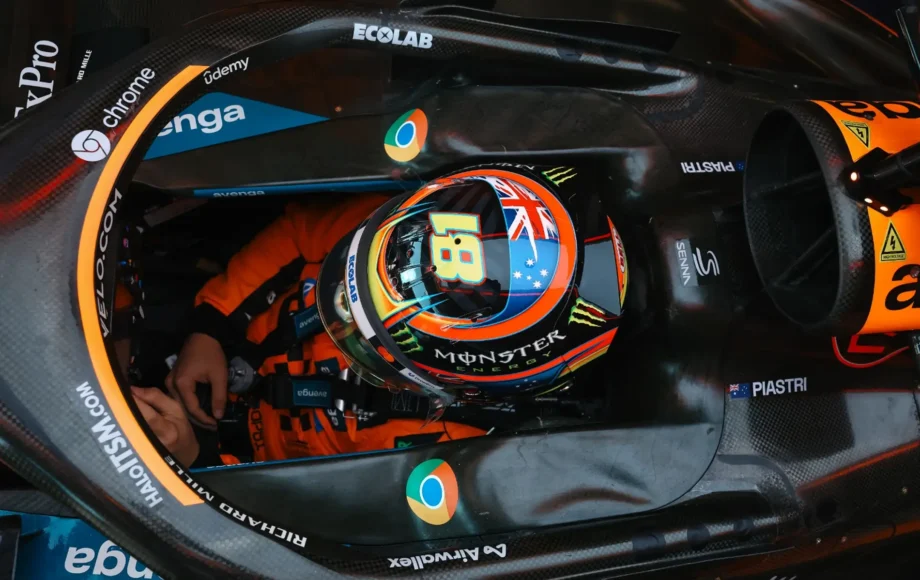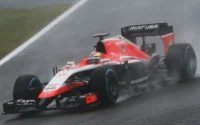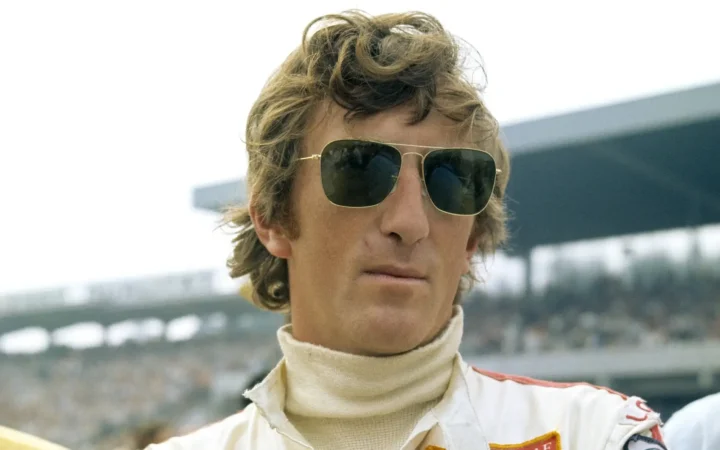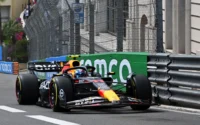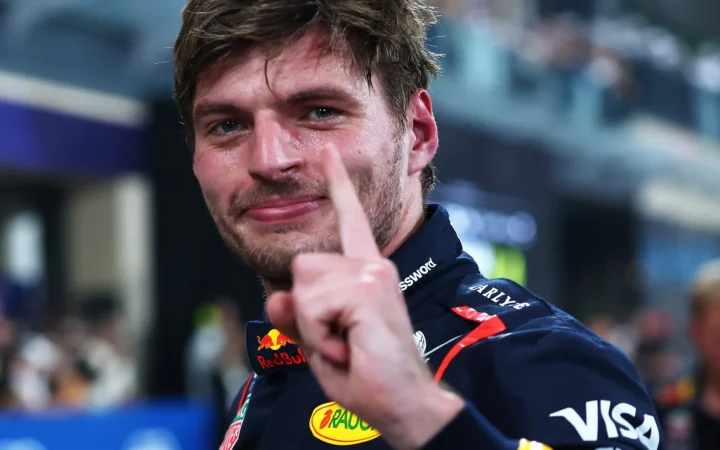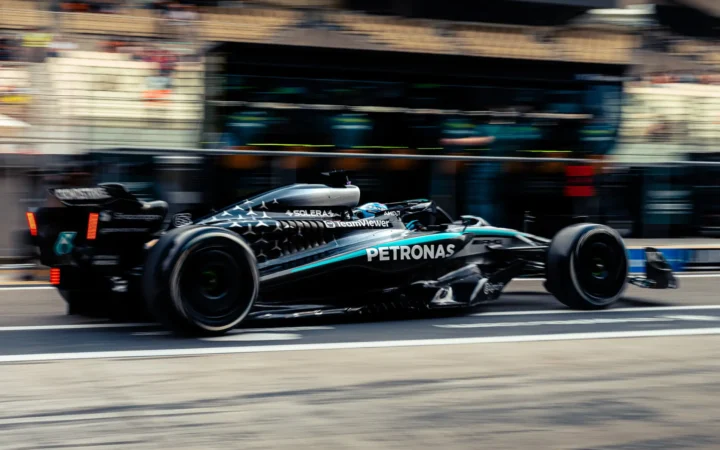Formula 1 driver numbers are more than just trackside identifiers — they’re part of the brand, the legacy, and even the mindset of each driver. From merchandise to social media handles, these digits have become symbols of identity that fans rally around. But the path to this modern, personalised number system wasn’t always so clear-cut.
What To Know?
- Permanent numbers began in 2014, allowing drivers to choose a unique number for their entire F1 career — except for #1, which is reserved for the reigning World Champion.
- #17 is permanently retired in honour of Jules Bianchi, the only number ever officially withdrawn from use in Formula 1.
- Most drivers select numbers with personal meaning, such as childhood karting numbers, birthdates, lucky digits, or tributes to sporting heroes.
- 2025 sees a mix of rookies and veterans, with newcomers like Antonelli (#12), Bortoleto (#5), and Bearman (#87) choosing numbers tied to family, past success, or national pride.
In previous eras of F1, numbers were handed out with little consistency, often reshuffled season to season, and tied more to team standings than individual drivers. That all changed in 2014, when F1 introduced a bold new approach: allow drivers to choose their own number, one they would carry for the rest of their career. It was a move that put personality at the forefront and helped strengthen the connection between drivers and fans.
Whether it’s #44 tearing through corners or #1 flashing past the chequered flag, each number has a story. And while some have become synonymous with greatness, others have been permanently shelved — not forgotten, but preserved out of respect.
This guide is an introduction to driver numbers in Formula 1, including all the driver numbers for the 2025 F1 season and their explanations.
F1 Driver Race Numbers in 2025
Land Norris: #4
Lando Norris runs with #4 — a choice he admits wasn’t a reflection on childhood nostalgia or karting tradition. “The story is that there is no story,” Norris once said with a smile. While it may not carry deep personal history, the number has become a key part of his branding, especially through the clever hashtag #L4ndo, which blends his name and race number.
Norris has also mentioned he was tempted to choose #46 in honour of his racing hero, MotoGP icon Valentino Rossi. But in the end, he decided against it, saying he didn’t want to be a “copycat.” So he went with something clean, simple, and distinctively his — and over time, #4 has become synonymous with the laid-back yet fiercely competitive Brit.
Gabriel Bortoleto: #5
Rookie Gabriel Bortoleto made his Formula 1 debut with #5 on his Sauber — a number that already holds championship pedigree for him. He previously carried #5 during his successful 2023 Formula 3 campaign, where he clinched the title in dominant fashion. By bringing that same number into F1, Bortoleto carries a bit of his winning momentum with him into the big leagues.
Isack Hadjar: #6
Fellow debutant Isack Hadjar chose #6 for his rookie season with Racing Bulls. For Hadjar, the number goes back to his karting days and represents a consistent thread throughout his junior racing career.
Jack Doohan: #7
Jack Doohan made his debut with #7 for Alpine. Originally, the Australian had requested to use #12, thinking it was free. But when it became clear that fellow rookie Kimi Antonelli had already claimed it, Doohan chose a number that carried its own weight in meaning. “I wanted to go with a number that I raced with before. Something that had meaning for me,” he explained. Doohan last used #7 in 2019, and it also happened to be the number famously associated with one of his idols — Kimi Räikkönen. It was the first time #7 had been available since Räikkönen retired at the end of 2021, due to F1’s rule that a number can only be reassigned two seasons after a driver has left the sport.
Pierre Gasly: #10
Pierre Gasly races with #10, a number that carries both personal and patriotic meaning. He first found success with it during his title-winning run in the 2013 Formula Renault 2.0 Eurocup, and it’s been part of his racing identity ever since. But there’s more to it than just motorsport memories — Gasly is also a huge fan of French football icon Zinedine Zidane, who famously wore #10 for the national team.
Kimi Antonelli: #12
Mercedes’ highly anticipated rookie made his F1 debut with #12 — a choice inspired by his childhood hero, Ayrton Senna. The Brazilian three-time World Champion used #12 during a defining chapter of his career, from 1985 through to his first world championship in 1988. By choosing it, Antonelli ties his own journey to one of the most iconic figures in F1 history.
Fernando Alonso: #14
Fernando Alonso races with #14, a number deeply rooted in one of the most defining moments of his early career. On 14 July 1999, at just 14 years old, Alonso won the karting world championship — driving with none other than #14. “From that moment I knew #14 was my number,” he once said. Decades later, that same number still sits proudly on his Formula 1 car.
Charles Leclerc: #16
Charles Leclerc races with #16, a number that blends personal significance with a bit of creative thinking. Born on 16 October 1997, the number already held personal relevance. But it wasn’t his first choice — Leclerc originally wanted #7, considering it his lucky number. Unfortunately, that was already taken by Kimi Räikkönen. His next pick was #10, but that too was off the table, already claimed by Pierre Gasly. So Leclerc did the next best thing: “I chose 16 because one plus six is seven,” he explained. Simple, clever, and meaningful — much like the driver himself.
Lance Stroll: #18
Lance Stroll races with #18 — a number that’s followed him through some of the most important milestones in his career. He first used it during his championship-winning run in the Italian Formula 4 series, and it’s stuck with him ever since. The number took on even more meaning when he made his Formula 1 debut with Williams shortly after turning 18. “A bit superstitious, but I like to hold on to little things that are important to me,” Stroll has said. “I don’t want to change them.”
Yuki Tsunoda: #22
Yuki Tsunoda runs with #22 in Formula 1 — a choice from his early karting days. He regularly raced with #11 back then, a number he hoped to carry into F1. However, that number was already taken by Sergio Pérez at the time Tsunoda entered the sport. So, in a simple but meaningful twist, he decided to double it, landing on #22 instead. While it wasn’t his first choice, the number has since become part of Tsunoda’s F1 identity.
Alex Albon: #23
Alex Albon races with #23, a number he carried through the first phase of his Formula 1 career and chose to keep when he returned to the grid. A huge fan of MotoGP legend Valentino Rossi — just like Lando Norris — Albon originally raced with #46 during his karting days in tribute to the Italian icon. But when it came time to choose his permanent F1 number, he decided on a subtle homage by going with half of 46. The result was #23.
Nico Hulkenberg: #27
Nico Hülkenberg returned to a full-time race seat in 2023 with #27, the same number he used during the early stages of his career. While #27 carries plenty of weight in F1 history — famously driven by Gilles Villeneuve, and at times by Ayrton Senna and Jean Alesi — Hülkenberg’s choice has nothing to do with that legacy. Instead, it’s a personal pick: 2 + 7 equals 19, matching the day of his birthday, 19 August.
Liam Lawson: #30
Liam Lawson lined up for his first full Formula 1 season with #30 — a number that’s followed him through much of his junior racing journey. The New Zealander ran with #30 during his early days in Formula First and later in DTM, making it a familiar and meaningful choice as he stepped up to the top tier.
Esteban Ocon: #31
Esteban Ocon races with #31, a number that holds strong sentimental value. It dates back to 2007, when he used it to win his first major karting title — a milestone Ocon still considers one of the most important years of his racing life. The number resurfaced in 2014 when he made his Formula 1 test debut with Lotus, again running with #31. That early success and its continued presence throughout key moments in his career made it the natural choice when permanent numbers were introduced.
Franco Colapinto: #43
After replacing Jack Doohan at Alpine after round 5 of the 2025 season, Franco Colapinto rejoined the grid, after driving for Williams in 2024, with #43. Colapinto chose to race with the number 43 in Formula 1 because it was his brother’s number when they started karting together at a local indoor karting centre. The number 43 has remained a family race number ever since.
Lewis Hamilton: #44
Lewis Hamilton has made #44 one of the most iconic numbers in modern Formula 1. It all began with his very first karting race, where he ran with #44 — a number inspired by the licence plate of his father’s car, F44. At the time, Hamilton didn’t know which number to pick, so his dad’s car became the unlikely source of inspiration. That small decision would go on to shape his racing identity.
Carlos Sainz: #55
Carlos Sainz races with #55, a number born out of a clever bit of wordplay. His favourite number has always been 5, but when he joined Formula 1, it was already taken by Sebastian Vettel. Rather than settle for a completely unrelated number, Sainz came up with a creative solution: “The ‘S’ in my first name looks like a 5, and so does the ‘S’ in my last name — so that makes 55.”
With that logic, #55 became more than just a substitute — it became a personal brand. It’s since featured prominently across his helmets, merchandise, and even social media handles, turning a workaround into a defining part of his identity.
George Russell: #63
George Russell proudly races with #63, a number that carries family significance. Rather than picking a number from his own karting days, Russell chose one that belonged to his older brother, who used #63 during his own time in karting.
“This has become our family number ever since,” Russell has said — a nod to the role his brother played in his early racing journey.
Oscar Piastri: #81
Oscar Piastri races with #81 in Formula 1 — a number that’s followed him through key chapters of his junior career. He began karting in Australia with #11, but when a rival took that number, he switched to #81. What started as a fallback soon became his go-to.
As Piastri moved into European racing, he cycled through several numbers across categories, but #81 kept resurfacing — most notably during his campaigns in British F4 and the Formula Renault Northern European Cup. By the time he reached F1, the choice was obvious.
Oliver Bearman: #87
Oliver Bearman made his full-time Formula 1 debut with #87 — the highest number currently on the grid. The choice is a deeply personal one, rooted in both family and tradition. “It is the number that I raced since the beginning and it’s the number that my dad raced with,” Bearman explained.
The reasoning behind it is simple yet meaningful: he was born on 8 May, and his brother on 7 August — combining those dates gave them 87, a number that has now become part of the Bearman racing heritage.
History of Driver Numbers in Formula 1
Early Years: 1950s–1970s
In Formula 1’s formative decades, starting in 1950, race numbers were less about identity and more about logistics. There was no unified system — each Grand Prix had its own way of assigning driver numbers, often based on when teams entered the race or how drivers had fared in recent events. This meant a driver could race with a different number almost every race weekend, and fans had little reason to associate any particular number with a specific name.
Some structure emerged as the sport grew in scale and professionalism through the 1960s and into the early 1970s. Numbers started sticking with teams for entire seasons, typically based on their ranking from the previous year’s Constructors’ standings. But these were still team-centric allocations — the idea of a number being uniquely tied to a driver hadn’t taken hold yet. Identity in F1 was still represented by helmet designs and team colours, not the digits on the nose and rear of the car. That would come much later.
Permanent Numbers for Teams: 1974–1995
From 1974 onward, Formula 1 finally adopted a consistent numbering system — one that, for the first time, offered a sense of continuity from season to season. Following a successful trial in late 1973, numbers were locked in based on the previous year’s Constructors’ standings. The reigning World Champion’s team would receive the coveted #1 and #2, while the rest of the grid followed in descending order.
It was a system built around the teams rather than the drivers, but it still created iconic associations — sometimes by accident. For example, when Williams joined the grid in 1977, the team received #27 and later #28. Those numbers bounced between teams for a few years, until Ferrari inherited them in the early ’80s, turning them into legends thanks to drivers like Gilles Villeneuve and later Jean Alesi. Meanwhile, Williams’ identity became entwined with #5 — especially during Nigel Mansell (Red 5) and his title-winning era.
The system also had its quirks. When a reigning World Champion retired, as with Nigel Mansell in 1993, the #1 went unused. Instead, the top team inherited an odd combo: #0 and #2. It was a strange visual, but a unique slice of F1 history that symbolised just how rigid, and yet occasionally awkward, the number rules had become.
Numbering Revisions: 1996–2013
By 1996, Formula 1 sought to streamline its numbering rules, introducing a more structured — and slightly more driver-focused — approach. Under this updated system, the reigning World Champion would still carry the prestigious #1, but now that number followed the driver, not the team. Their teammate would get #2, and the rest of the grid’s numbers would fall in line based on the previous season’s Constructors’ Championship standings.
This change introduced some interesting scenarios. One of the clearest examples came in 1997, when Damon Hill, having just won the title with Williams, made a shock move to Arrows. Arrows, which had been set to run with #11 and #12, were bumped up to #1 and #2 purely because Hill brought his champion status with him. Despite being the top team in 1996, Williams ended up with #3 and #4. It was a twist that highlighted how the driver, not the team, now defined the highest number on the grid.
This system remained largely intact throughout the late 1990s and into the 2000s. But while it made the champion’s status more visible, it still didn’t give drivers much personal attachment to their numbers. Aside from the select few who earned the right to use #1, race numbers were more functional than emotional—assigned, not chosen. That would change significantly with the sport’s following step change.
The 2014 Rule Change
A significant turning point came in 2014, when Formula 1 introduced permanent driver numbers — a move designed to modernise the sport and put more focus on individual driver identity. For the first time, racers could choose a number between 2 and 99 that would be uniquely theirs for the entirety of their F1 career. It wasn’t just a regulatory change — it was a shift in how drivers were marketed, how fans connected with them, and how F1 promoted its drivers.
The idea was simple: by giving drivers control over their own numbers, F1 could leverage personal branding and create lasting associations. From #44 for Lewis Hamilton to Daniel Ricciardo as #3 or Lando Norris running as #4, these numbers have become part of the driver’s DNA, appearing on caps, merchandise, social posts, and even tattoos.
There’s one exception to this rule: the number 1. It remains reserved exclusively for the reigning Drivers’ World Champion, but using it is optional. Some, like Max Verstappen in recent years, have adopted the #1. Others, like Hamilton, preferred to stick with their chosen number regardless of title success.
Underpinning it all is a two-year reservation rule—if a driver leaves the grid, their number is held in limbo until it becomes available again.
Is the Number 69 Banned in F1?
No. While the number 69 isn’t officially banned under FIA regulations, it has never appeared on the grid since drivers were given the freedom to choose their permanent numbers in 2014. Technically available, it remains untouched — and that’s probably no coincidence.
Given its well-known cultural connotations, it’s likely that drivers steer clear of #69 to avoid unwanted media attention or branding complications. In a sport where PR teams tightly manage professionalism, sponsorship, and image, the number may simply be seen as too risky or potentially distracting. So while it’s not off-limits on paper, it’s become something of an unofficial no-go — a number that remains conspicuously absent from the modern F1 roster.
Can a F1 Driver Use Number 13?
Yes, drivers are free to use the number 13, and one already has. When the permanent number system launched in 2014, Pastor Maldonado opted for #13, becoming the first to race with it in the modern era of F1.
Despite its reputation as an unlucky number in various cultures, Formula 1 didn’t exclude it from the pool. The decision to include 13 left the choice of superstitions to the drivers. Since Maldonado’s exit from the sport, no one has picked it again, but it remains available for anyone bold enough to take it on.
Why is 17 not allowed in F1?
Number 17 is the only driver number in Formula 1 to be officially retired — a tribute to the late Jules Bianchi. The French driver was using #17 when he suffered a devastating crash during the 2014 Japanese Grand Prix. After fighting for nine months, Bianchi sadly passed away in 2015 from his injuries.
Formula One History Recommends
In response, the FIA decided to withdraw the number from use permanently. It was a rare and deeply respectful move in a sport that rarely retires numbers, as a lasting honour to Bianchi’s memory. To this day, no F1 driver can choose #17 — and none ever will.
Why Does Lewis Hamilton Use Number 44?
Lewis Hamilton’s choice of #44 is deeply personal — a tribute to his karting days and the start of his journey with his father by his side. Long before Formula 1, #44 was the number on the side of a second-hand go-kart that his dad rebuilt after spotting it in a newspaper ad. The number came from his father’s old car registration, F44, and it stuck.
“When I was eight, we didn’t have much,” Hamilton has said. “That kart had been through a handful of families. But #44 became our number, and it stayed with us.”
When the permanent driver number system came into the sport in 2014, Hamilton didn’t hesitate to reclaim #44. He had previously raced with whatever numbers McLaren used — even running #1 in 2009 after winning his first title — but none of them ever felt like his. “44 just looks better,” he once joked.
Why did Max Verstappen pick #33?
Before becoming World Champion, Max Verstappen raced with #33 — a number that held personal meaning dating back to his karting days. His original preference was #3, which he considered lucky and had used throughout his early racing years. But Daniel Ricciardo had already claimed that number by the time Verstappen arrived in F1.
Rather than move on entirely, Verstappen went for a creative twist: doubling it to #33, which he once described as bringing “double happiness.” It was a subtle nod to his origins and a way of carrying a bit of his childhood into the top tier of motorsport
Though he later switched to #1 after winning his first title in 2021, #33 remains associated with Verstappen.
Will Max Verstappen drive with race number 1 in 2025?
Yes, Max Verstappen will continue to race with number 1 in the 2025 Formula 1 season. As the reigning four-time World Champion, Verstappen has chosen to keep using the number that represents his position at the top of the sport.
After winning his first title in 2021, Verstappen made the switch from his long-time #33 to #1 — becoming the first driver to do so since Sebastian Vettel in 2014. While the number is optional for champions, Verstappen has embraced its significance, saying:
“How often do you get the chance to drive with starting number 1 in your Formula 1 career? You never know… As long as I am world champion, I will use number 1 every single year.”
He’s stayed true to that ever since, carrying #1 through three consecutive title defences with Red Bull. Unless someone dethrones him, Verstappen and #1 will remain a fixture on the grid.

